|
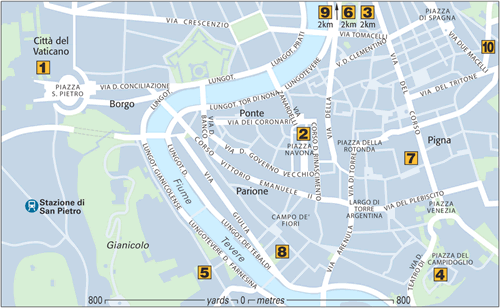
Vatican Museums Occupying
papal palaces dating from the 13th century onwards, these galleries
include the Graeco-Roman antiquities, the Etruscan Museum, four Raphael
Rooms, the Collection of Modern Religious Art, the Sistine Chapel and
the Picture Gallery .
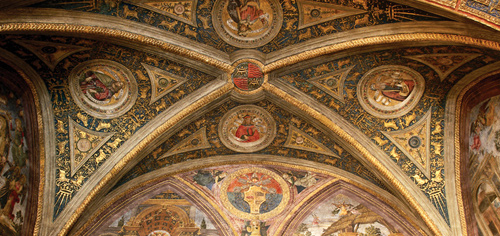
Sala dei Misteri, Vatican Museums
Museo Nazionale Romano Founded
in 1889, this museum’s holdings include archaeological finds and
antiquities unearthed since 1870, plus pre-existing collections. The
works are spread around five separate locations: the Baths of
Diocletian, the Aula Ottagona – a part of the baths, nearby Palazzo
Massimo, Palazzo Altemps, and the recently opened Crypta Balbi . Galleria Borghese A
tribute to the unbridled power of favoured papal nephews in the 1600s,
this pleasure-palace, its priceless collections of art, and its newly
restored gardens comprise one of the most gorgeous sights in Rome .
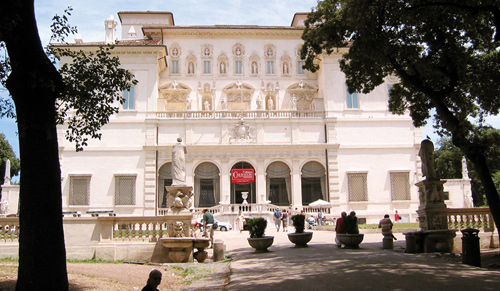
Galleria Borghese
Musei Capitolini The
glorious square, designed by no less than Michelangelo, is home to
smaller papal art collections than the Vatican’s, but equally invaluable .
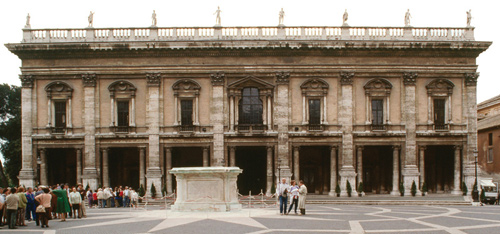
Palazzo dei Conservatori, Musei Capitoline
Galleria Nazionale d’Arte Antica This state art collection is now divided between two noble family residences: Palazzo Barberini and Palazzo Corsini.
The first boasts the Gran Salone, with its dazzling illusionistic
ceiling by Pietro da Cortona, along with works by Filippo Lippi, El
Greco, Holbein and Caravaggio. The second houses a Fra Angelico
triptych, and paintings by Rubens, Van Dyck and Caravaggio. Villa Giulia The
building itself is a 16th-century country retreat designed for Pope
Julius III by Vignola. Since 1889, it has housed the state collection of
pre-Roman art, including Etruscan artifacts and relics of the Latins
and other tribes. The prize Etruscan work is the 6th-century BC Husband
and Wife Sarcophagus, a large terracotta showing a serenely smiling
couple on a couch .
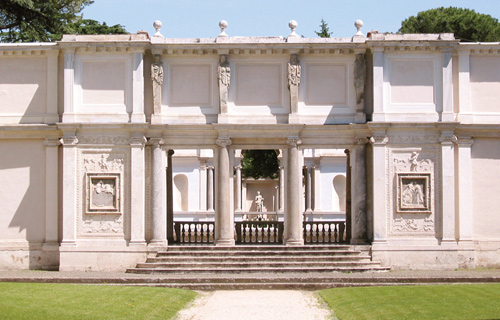
Villa Giulia
Galleria Doria Pamphilj This
aristocratic family’s palace is filled with masterpieces by such
painters as Raphael, Titian and Velázquez, whose portrait of the
Pamphilj pope is famous for its psychological depth. This exhibit is
fortunate to have a superb audio-guide, narrated by the present-day
Prince Jonathan Doria Pamphilj (in English) that gives rare insight into
the history of the collection .
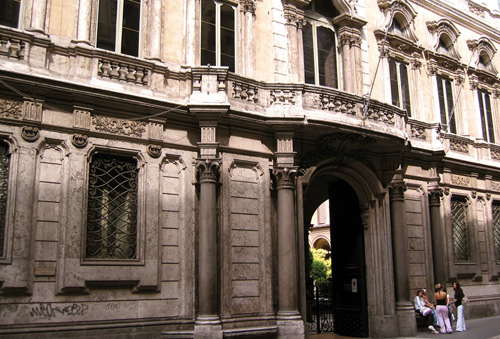
Palazzo and Galleria Spada This
superb 16th-century palace contains a specially built 17th-century
gallery to hold the cardinals’ collection of Renaissance, Baroque and
later works, including paintings by Rubens and Jan Brueghel the Elder.
One of the high points is Borromini’s whimsical trompe-l’oeil gallery, a clever study in illusory perspective that appears to be four times longer that it really is . Galleria Nazionale d’Arte Moderna The belle époque
home to this collection offers sculptures by Canova and an exhaustive
view of 19th-century Italian and European painting. There is also an
eclectic selection of modern works, including artists Rodin, Cézanne,
Modigliani, Van Gogh, Monet, Klimt and Jackson Pollock. Galleria Comunale d’Arte Moderna Begun
from a small donation to the city in 1883, this collection has grown to
include examples of every major 19th- and 20th-century Italian artistic
movement. Exhibitions include canvases by De Chirico, Morandi and Afro,
as well as sculptures.
|